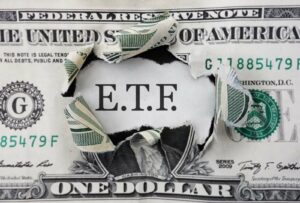Everybody suspects that Members of Congress have the upper hand when it comes to investing. For many years it wasn’t even clear that insider trading regulations actually applied to Congress, because having broad insider information was just seen as part of the job. Today, the legal question of “Can Congress legally trade on insider information?” has been clearly answered. No, they cannot. In practice, charges of insider trading against Members of Congress are rare, difficult to prosecute, and generally require at least tacit cooperation from the legislative body itself.
We are neither lawyers, nor prosecutors, instead, we care about whether Congress outperforms the stock market.
The question of whether legislators’ investments outperform the market has spawned a number of academic studies. As the starting point for our own research, we’ve focused on four major studies of Congressional investment. Each of the studies has a different methodology, covers a different time period, and comes to a slightly different conclusion – so FinePrint is replicating them, but with better and more-timely data.
The first study is Abnormal Returns from the Common Stock Investments of the U.S. Senate by Alan Ziobrowski. Here, Ziobrowski and his co-authors test whether Senators’ investments outperformed the market by separately analyzing their purchases and sales of exchange-listed stocks. Ziobrowski then built a portfolio of the purchased stocks and another of the sold stocks and measured each portfolio’s performance against that of academic stock market models that control for risk.
The bottom line is that the Senators’ beat the market with their purchases by ~11% per year, and the stocks they sold underperformed the market by 1% per year. This study covered all reported Senatorial stock transactions from 1993 to 1998. Here’s a graphic from the paper tracing the relative performance of the two portfolios. Note how steep the red line gets after “Day 0,” i.e. the day it was purchased.

Graph of Relative Congressional Stock Performnace – Ziobrowski 2004
On its face, Ziobrowski’s findings offer strong evidence that Senators did very well for themselves as investors. In fact, both this study and Ziobrowski’s follow-up (which covers the House of Representatives from 1985 to 2001) find evidence of Congressional outperformance.
This paragraph from the conclusion summarizes their findings well:

Except from Ziobrowski’s 2004 Paper
“…it seems clear that Senators have demonstrated a definite information advantage over other investors…”
These studies also had a large effect on the public debate about Congressional investment, gaining substantial media coverage and creating pressure for Congress to clarify its disclosure and regulatory coverage. This led to the Stop Trading on Congressional Knowledge (STOCK) Act of 2012, which President Obama signed into law. Our legislative history of the STOCK Act is available here.
Here are four final points regarding Ziobrowski 2004:
- This study covers a period of time when the stock market was strong. From 1993-98 the S&P500 was up by ~150%.
- Congressional investment disclosures were even more difficult to aggregate and study back then, so any self-dealing would have been more difficult to detect, meaning that behaviour might have been more flagrant than now.
- The academic stock market model Ziobrowski uses to represent “the market” has since been expanded and there is some debate about what the appropriate measuring rod should be for market outperformance.
- A stock’s performance is only included for 255 days from the purchase or sale. Deviation from the market after that time would not show up.





